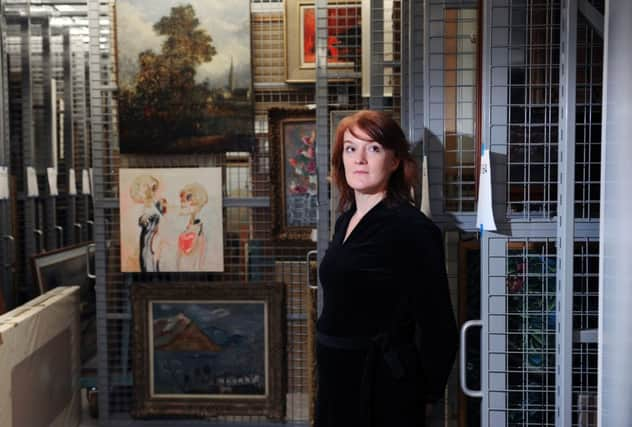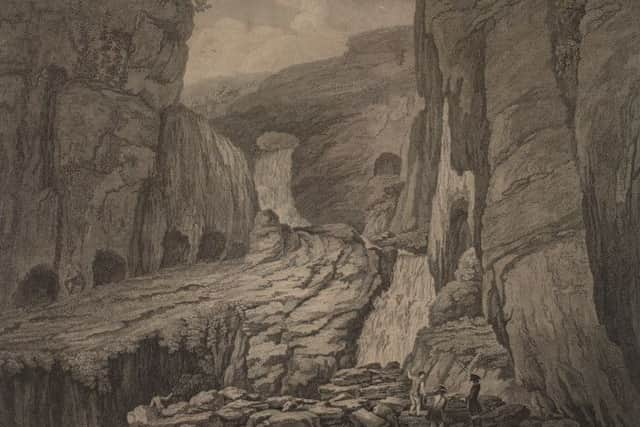Identity parade of Yorkshire’s forgotten landmarks


In 10 leather-bound volumes in the stores of Hepworth Wakefield lie 1,200 watercolours, drawing and prints. Each represents a chapter in the history of a particular building or landscape and together they capture a slice of Yorkshire from a century or more ago.
In one, there are paintings of Beverley and Ripon cathedrals and the ruins of Fountains Abbey. In another there are drawings and engravings of Wakefield’s Chantry Chapel and a whole batch of works relating to the early life of North Yorkshire explorer Captain Cook, from the school he attended in Marton to the house at Great Ayton built by his father.
Advertisement
Hide AdAdvertisement
Hide AdThe Gott Collection was assembled during the 19th century by John Gott, vicar of Leeds and later Bishop of Truro and his wool merchant father William. Both had a liking for maps, sketches and detailed architectural drawings of some of Yorkshire’s most historic buildings.


Arguably the finest surviving collection of its kind in the region, the volumes were presented to Wakefield Art Gallery in the 1930s by Frank Green, a Yorkshire industrialist and philanthropist, but since then the works have hardly been seen by the public in their entirety.
“The Gott Collection is hugely important,” says Frances Guy, head of collections and exhibitions at Hepworth Wakefield. “It’s all about the country’s landscape and landmarks. Some are very familiar and look largely unchanged today from 100 years ago or more and there are some really fascinating inclusions like the original sketches of the Castle Howard estate.
“However, some of the works are more obscure and feature buildings and landmarks which don’t exist any more. These are the ones we are really interested in at the moment. Details of the locations have been lost in the passage of time and in some cases we don’t even know who the artist was or when it was created.”
Advertisement
Hide AdAdvertisement
Hide AdIt’s one of the reasons why a major project to move the Gott Collection online was launched. Funded by the Esmée Fairbairn Foundation, it means the maps, topographical drawings and watercolours can now be accessed by the public through the Hepworth website and the gallery hopes that it might finally be able to shed new light on some of the forgotten landmarks.
“We did have a PhD student researching some of the more obscure works, but it’s such a huge task that they were only able to get so far,” says Frances. “However, we know that across Yorkshire and beyond there are people with an awful lot of knowledge about the history of the county and we are hoping that they may now be able to help.
“I am sure that there are individuals out there who will see one of our unidentified watercolours and know instantly which church or castle it is and together we might be able to make the collection even better than it is already.”
Some of the better-known artists represented in the collection include John Buckler and his son John Chessell Buckler, who together became well-known for their architectural depictions of Yorkshire’s abbeys, cathedrals and grand houses. Elsewhere there are engravings from drawings by JMW Turner of the crypt at Kirkstall Abbey in Leeds and a number of churches have been depicted by Thomas Beckwith who settled in York.
Advertisement
Hide AdAdvertisement
Hide AdThe new website means art lovers across the world can now access a previously hidden gem, browsing the works by artist, place or theme and should they know the location of one of the more mysterious images, the Hepworth want to be the first to know.
“A buildings like the Chantry Chapel, which can be seen from the gallery, was a popular subject for a number of 18th and 19th century artists and when you look at the collection as a whole it really is fascinating visual history of the development of Wakefield and the surrounding area,” says Frances, who joined the Hepworth team two years before the gallery officially opened its doors to the public.
“One of the aims of Hepworth Wakefield has always been to increase accessibility to art. It is simply impossible to show everything we have in our collection, but putting something like the Gott Collection online is a way of opening up our treasures to a much wider audience.”
Digitising the collection is the result of five years work and it is hoped that by encouraging people to browse the 65 watercolours, 315 drawings and 749 prints contained within the online archive it will reveal more about these hidden corners of Yorkshire.
Advertisement
Hide AdAdvertisement
Hide AdThe prints, paintings and woodcuts collected by the Gotts form part of the Wakefield Art Collection. Built over almost 100 years, it contains around 5,000 works of art, much of it kept within the bowels of the new Hepworth gallery.
“Until you see something like the Gott Collection in its entirety it’s hard to visualise importance,” says Frances. “It really is impressive and it’s really thanks to people like them that we have this world class collection.
“Those of us who work at the Hepworth are lucky to be in contact with works of art like this everyday, but anything we can do to bring people closer to collections like this has to be a good thing.”
• To view the collection go to www.hepworthwakefield.org/collection/the-gott-collection.
Advertisement
Hide AdAdvertisement
Hide AdOn September 24, at 2pm, Frances Guy will be talking about the project which allowed the Gott Collection to be accessible online for the general public for the first time. Tickets are free, but places limited. To book email [email protected] or call 01924 247360.